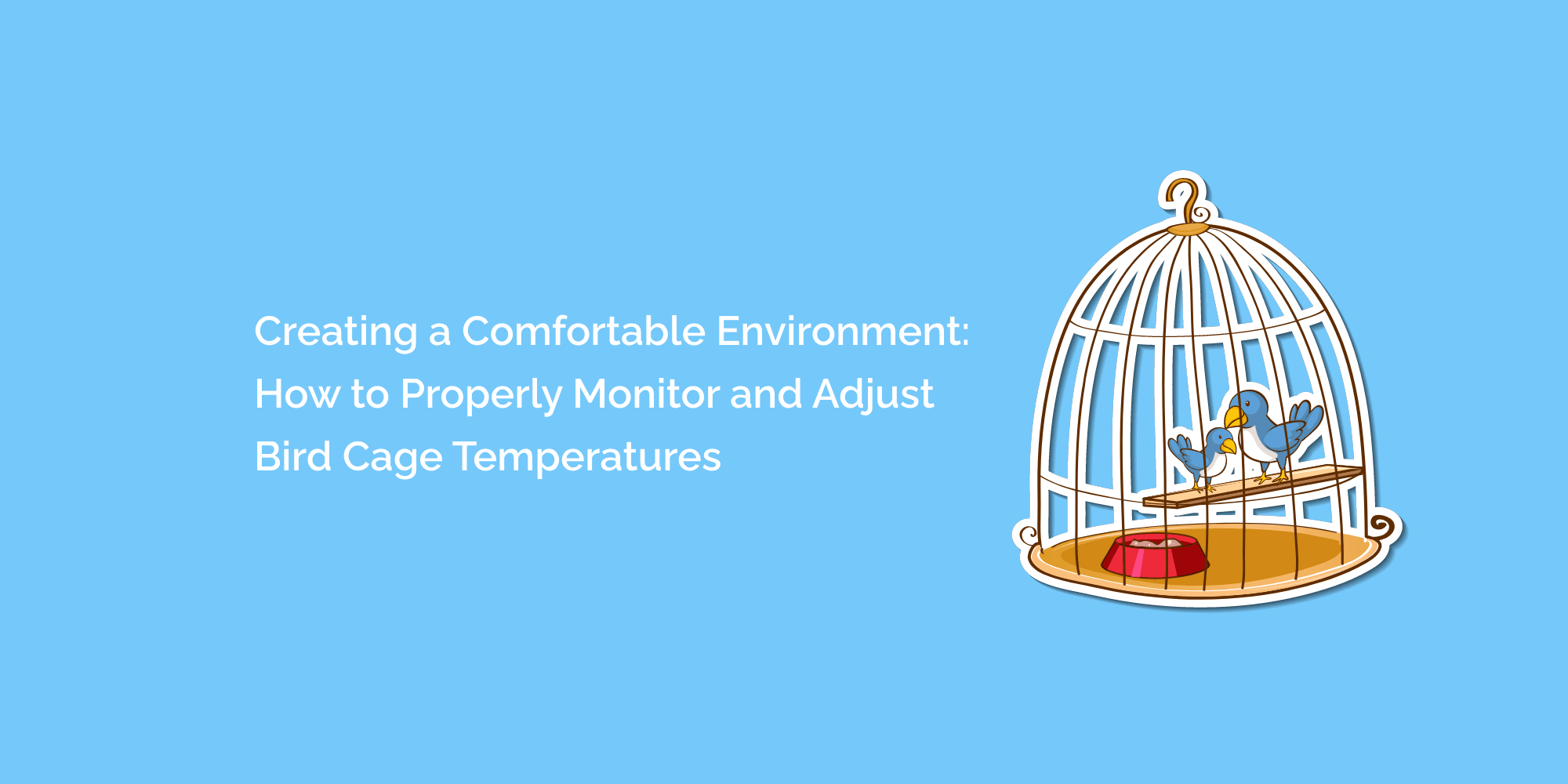As devoted bird owners, we are responsible for providing our feathered companions with a safe and comfortable living environment. Proper temperature control is crucial to bird care, as birds are susceptible to temperature fluctuations. Monitoring and adjusting bird cage temperatures appropriately is essential for their well-being, happiness, and overall health. This comprehensive blog will explore the importance of creating a comfortable environment for birds, the best practices for monitoring temperature, and how to make adjustments to ensure our avian friends thrive in their living spaces.
Understanding the Significance of Temperature Control:
Birds are endothermic creatures, meaning they rely on their environment to regulate their body temperature. Unlike mammals, they cannot sweat to cool down or shiver to generate heat. Instead, birds use various techniques, such as panting, fluffing their feathers, or holding their wings away from their bodies to maintain their ideal temperature. As responsible bird owners, we must understand the impact of temperature on birds and provide an environment that supports their natural needs.
-
The Impact of Incorrect Temperatures: Incorrect temperatures in the bird cage can adversely affect your feathered friend's health. High temperatures can lead to heat stress, dehydration, and respiratory problems, while low temperatures can cause cold stress and weaken the bird's immune system. Maintaining the ideal temperature range is vital for preventing temperature-related illnesses.
- Species-Specific Requirements: Different bird species have varying temperature preferences based on their native environments. Understanding your bird's species-specific requirements is essential for creating an optimal living space.
The Importance of Proper Temperature Monitoring:
Monitoring bird cage temperatures is a proactive approach to ensure your pet bird's comfort and well-being. Regular temperature checks allow you to:
-
Identify Temperature Fluctuations: Monitoring helps you recognize sudden or prolonged temperature fluctuations that may harm your bird's health.
-
Adjust to Seasonal Changes: Different seasons come with varying temperature requirements. Monitoring allows you to make necessary adjustments during hotter or colder months.
-
Early Detection of Issues: Temperature monitoring allows you to detect early signs of temperature-related stress or illness, enabling you to take timely action.
- Prevent Health Risks: Maintaining the ideal temperature range reduces the risk of heat or cold pressure and other temperature-related health issues.
Best Practices for Temperature Monitoring:
To effectively monitor bird cage temperatures, follow these best practices:
-
Use Reliable Thermometers: Invest in digital thermometers with remote probes or intelligent monitoring systems that offer accurate and real-time temperature tracking. Place the search at the bird's perch level to obtain the most precise reading of its environment.
-
Monitor Room Temperature: Keep track of the room temperature where the bird cage is located. Sudden changes in room temperature can impact your bird's well-being.
-
Set Temperature Alerts: Configure your temperature monitoring system to send alerts when the temperature exceeds or falls below the recommended range. This ensures prompt attention and intervention.
-
Conduct Regular Temperature Checks: Daily temperature checks to ensure the bird's environment remains consistent and comfortable.
-
Position the cage Appropriately: Avoid placing the bird cage near windows, air conditioning vents, or direct sunlight, as these can cause temperature fluctuations.
- Monitor Humidity Levels: Certain bird species have specific humidity requirements. Consider using hygrometers to monitor humidity levels in the bird's living space.
Making Adjustments for Optimal Temperatures:
To create a comfortable environment for your bird, make the necessary adjustments based on the temperature monitoring:
-
Cooling Options: During warmer weather, provide cooling options, such as fans, misters, or shallow water dishes for the bird to bathe.
-
Cage Covering: During colder nights, cover part of the cage to provide additional insulation and protect the bird from drafts.
-
Adjust Room Temperature: Use heating or cooling systems to maintain the ideal temperature range within the room where the bird cage is located.
-
Consider Seasonal Changes: Make seasonal adjustments to the bird's environment to accommodate changes in temperature and humidity.
- Relocate the Cage: If the bird's cage is located near sources of extreme temperature, consider relocating it to a more suitable spot.
Recognizing Signs of Temperature Discomfort:
Observing your bird's behavior and body language can provide valuable insights into their comfort level with the cage temperature. Signs of temperature discomfort include:
-
Feather Puffing or Flattening: Birds may puff up their feathers to trap warmth in cold temperatures or flatten their feathers to dissipate excess heat in warmer conditions.
-
Excessive Panting: Panting or open-mouthed breathing can indicate heat stress in birds.
-
Lethargy or Unusual Agitation: Extreme temperatures can cause birds to become lethargic or display increased restlessness and agitation.
-
Changes in Eating and Drinking Habits: Extreme temperatures can affect your bird's appetite and water intake.
- Breathing Abnormalities: Monitor your bird's breathing patterns for signs of rapid or difficult breathing.
The Role of Proper Ventilation:
Good air circulation is essential for maintaining the bird's environment. Proper ventilation prevents the buildup of stale air, humidity, and harmful gases. While ensuring adequate ventilation, it is crucial to avoid placing the cage in drafty areas that could expose the bird to temperature fluctuations.
Seeking Veterinary Attention:
If you notice persistent signs of temperature-related stress, such as panting, lethargy, or breathing difficulties, it is essential to seek veterinary attention immediately. Timely intervention can prevent illness and save the bird's life.
Conclusion:
Creating a comfortable environment for our feathered friends is a fundamental responsibility for bird owners. Proper temperature monitoring and adjustments are crucial in ensuring your bird's well-being, happiness, and overall health. Investing in reliable temperature monitoring tools, conducting regular checks, and making appropriate adjustments can provide your beloved pet bird with a safe and nurturing living space. Recognizing signs of temperature discomfort and seeking veterinary attention when necessary is essential to preventing temperature-related health risks. With proper care and attention, your bird will thrive in an environment that supports its natural needs and ensures longevity and happiness.








